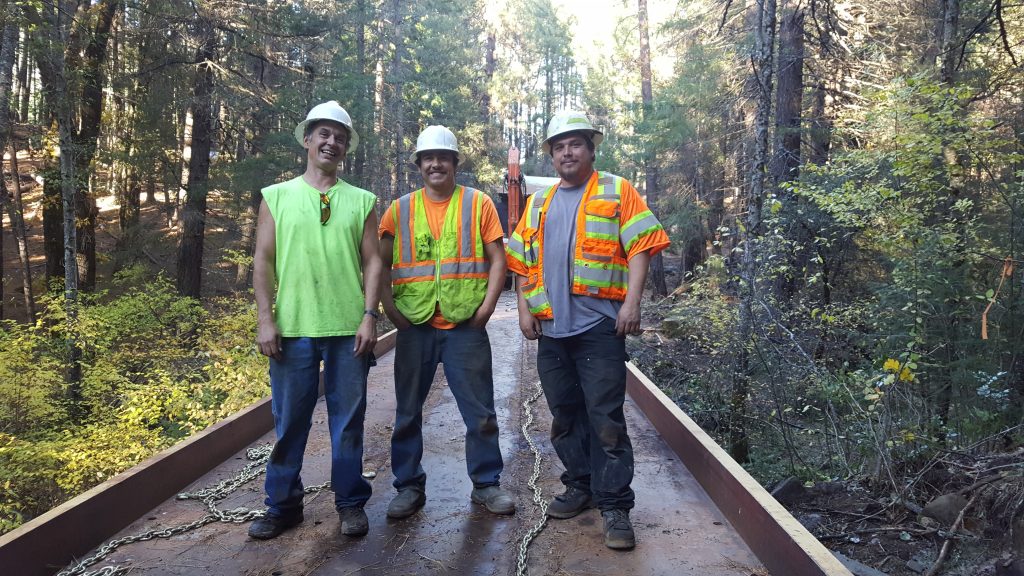The tribal (Yurok) connection, donated work of Forest Service for geotechnical work and the Non-NRCS engineering make this an especially interesting story.
Two 36-inch culverts with concrete paving collapsed in a high mountain step-pool stream, causing a fish passage barrier. The road provided the only access route to a private residence.

Contractors – Ka’pel Construction, named after Ka’pel village of Yurok tribe standing on constructed rail car bridge
NRCS partnered with US Fish and Wildlife Service, Salmon River Restoration Council, and the landowner to improve fish passage at the failed stream crossing. The project directly benefits 3.67 miles of salmonid habitat in Taylor Creek, a tributary to South Fork Salmon River, by removing a failed road crossing and installing a flat car rail car bridge for vehicle access to the private residence. Private consultant Pacific Watershed Associates (PWA) was responsible for the engineering design, inspection and certification.
Richard Bruce applied for assistance through the 2016 Environmental Quality Incentive Program (EQIP). A preliminary design from PWA was used to develop the EQIP contract. The project was completed in late 2017.
Debris was removed with restoration of the channel to match surrounding natural conditions.
This addressed resource concerns (fish passage) but did not address access for landowner. Installation of a rail car bridge was the preferred alternative solution due to the limitations of other alternatives and the suitability of the site for a bridge. Delivery of the materials was a challenge due to the steep and windy river road, and the narrow, gated driveway.
The rail car bridge alternative avoided most environmental impacts by installing a structure outside of the active channel. Precast abutments reduced instream construction time. A culvert was installed in the overflow channel adjacent to the bridge.
Interesting/Unusual Elements:
- The tribal connection between the contractor improving habitat for a culturally significant species, salmon and steelhead. Kap’el Construction won the contract, and the contractor is based in Weitchpec with employees and owner from the Yurok tribe. The owner named the business after the creek and village where he, his family, and ancestors lived.
- The Non-NRCS engineering process that was used for engineering support.
- Installation done without use of a crane due to rough terrain.










